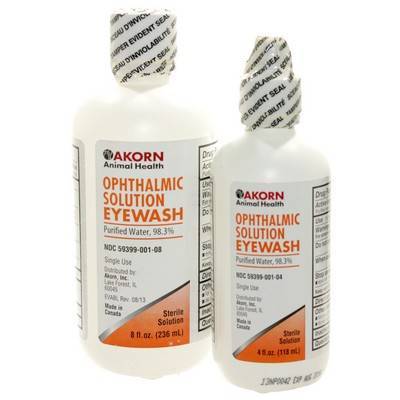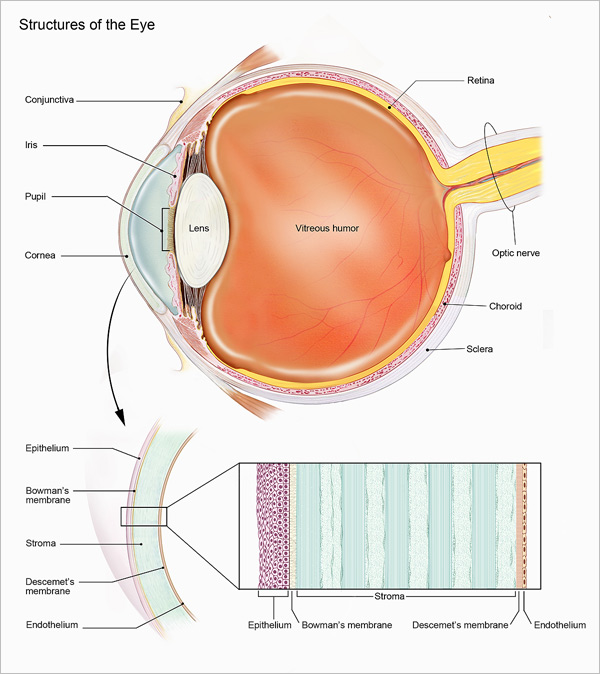 |
| Next stop: Shark Tank. Eat your heart out ,Mark Cuban! |
Consider that to identify a corneal lesion or matter in the eye is pricey (about $85 in Toronto for a fluorescien stain)! PLUS the cost of a consultation bring it to a grand total of about $160! That's just with a general practitioner vet - add another $300 for a referral consultation with a veterinary ophthalmologist, and you're up to $500. Yet, you can purchase all the materials to do the test at home (as often as needed) for a fraction of the price.
Humphrey is considering setting up an amateur ophthalmology diagnostic lab in his basement. Here's his research so far (and this may be updated as he gathers more information!)...
The main test that will most certainly repeated on him in the near future is the fluorescein stain to determine if he has an actual lesion when he displays possible symptoms (squinting, teary eyes, or clouds). This is the least expensive set of equipment and supplies.
First, you need a light to illuminate the dye you'll use. The Fluoro-Dot™ Specialty Light is about $30 plus shipping to order. However, a 2015 study published in the medical Journal of the American Academy of Dermatology revealed that an LED black light was as effective as a specialty Wood's lamp or opthalmologic light, and can be obtained for as little as $5. The researchers in the study found that the Black Light Master, a 9-LED flashlight-style device, was as effective as specialty equipment ($3.55 with free shipping at the time of writing!). However, the sleek Bluminator (at $80) is the option for stylish armchair ophthalmologists who have the disposable income.

That means that the total supplies to do 100 fluorescien tests is between $25 and $45, depending on the deals you can find on the equipment and supplies (more expensive if you go for sleek design). Comparably, the retail cost of 100 tests at a Toronto veterinarian's office would be $8500 not including the consultation fee, which would double that.
Similarly, the Shirmer Tear Test (STT) can be done with strips that cost only $15 for 100. This is a very easy test - the papers are held to they eye, and produce a value. The general STT reference range 15 to 20 mm/min for a normal reading, but other factors can affect what the value actually means. For example, older dogs frequently have STT values lower than 15 mm/min but have no clinical signs of keratoconjunctivitis sicca (KCS).
Humphrey envisions that any at-home testing would be a prelude to a veterinary visit for treatment where necessary. Now that he has successfully conquered 3-ish corneal ulcers, he knows the protocol, and would just require professional confirmation of the diagnosis, and a script for antibiotic drops and plasma.
Ideally, a slit lamp would allow for more advanced diagnostics - a portable one is quite costly, but a smaller, handheld version is more affordable ranging from about $300 to $600 and can do the same types of things (magnification and lighting that allow you to see beneath the surface of the eye). Humphrey's highly trained ophthalmologist is able to determine the presence of a lesion using a handheld slit lamp without fluorescien dye (though in the past 6 weeks, he experienced at least 4 fluorescein stains at relatively great expense). Interestingly, the ER hospital he visited after hours a few weeks back did not have a slit lamp on site, much to the disappointment of the attending veterinarian! If Humphrey had brought his own, Dr. Chan could have provided him with a more complete examination and diagnosis.
Similarly, the Shirmer Tear Test (STT) can be done with strips that cost only $15 for 100. This is a very easy test - the papers are held to they eye, and produce a value. The general STT reference range 15 to 20 mm/min for a normal reading, but other factors can affect what the value actually means. For example, older dogs frequently have STT values lower than 15 mm/min but have no clinical signs of keratoconjunctivitis sicca (KCS).
Humphrey envisions that any at-home testing would be a prelude to a veterinary visit for treatment where necessary. Now that he has successfully conquered 3-ish corneal ulcers, he knows the protocol, and would just require professional confirmation of the diagnosis, and a script for antibiotic drops and plasma.
Ideally, a slit lamp would allow for more advanced diagnostics - a portable one is quite costly, but a smaller, handheld version is more affordable ranging from about $300 to $600 and can do the same types of things (magnification and lighting that allow you to see beneath the surface of the eye). Humphrey's highly trained ophthalmologist is able to determine the presence of a lesion using a handheld slit lamp without fluorescien dye (though in the past 6 weeks, he experienced at least 4 fluorescein stains at relatively great expense). Interestingly, the ER hospital he visited after hours a few weeks back did not have a slit lamp on site, much to the disappointment of the attending veterinarian! If Humphrey had brought his own, Dr. Chan could have provided him with a more complete examination and diagnosis.
 |
| A hand-held slit lamp can accompany Humphrey to the ER where they don't have one! |
This offers an overview of using a slit lamp with photographs of human eyes.
A final piece of diagnostic equipment Humphrey is eyeing (no pun intended!) is a blood pressure monitor. He recently learned that blood pressure can cause certain eye problems, and was quite shocked to be charged $50 US for a simple reading. And for anyone concerned: his blood pressure was within the normal range in the vet's office, which is a stressful situation that often causes "white coat syndrome" even in dogs!
Though blood pressure reading is $50 at the veterinary hospital, an at-home blood pressure monitor for animals (with an appropriate cuff for a dog) is about $60 US on ebay - so basically, he could have had his own monitor for the cost of one reading + a fancy latte or two!
It appears that the more sophisticated monitors from veterinary supply companies are far more expensive, but they have features and parts unnecessary or at-home use (continuous monitoring features, a wide assortment of cuffs for animals of different sizes that one would need in a clinical setting but not for single-dog use).
In the coming days, Humphrey will be making some big purchase decisions, and hopes that a small investment (maybe as little as $25!) will save him thousands as he inevitably experiences weird ocular phenomena that can't be identified with the naked eye.
A final piece of diagnostic equipment Humphrey is eyeing (no pun intended!) is a blood pressure monitor. He recently learned that blood pressure can cause certain eye problems, and was quite shocked to be charged $50 US for a simple reading. And for anyone concerned: his blood pressure was within the normal range in the vet's office, which is a stressful situation that often causes "white coat syndrome" even in dogs!
Though blood pressure reading is $50 at the veterinary hospital, an at-home blood pressure monitor for animals (with an appropriate cuff for a dog) is about $60 US on ebay - so basically, he could have had his own monitor for the cost of one reading + a fancy latte or two!
It appears that the more sophisticated monitors from veterinary supply companies are far more expensive, but they have features and parts unnecessary or at-home use (continuous monitoring features, a wide assortment of cuffs for animals of different sizes that one would need in a clinical setting but not for single-dog use).
In the coming days, Humphrey will be making some big purchase decisions, and hopes that a small investment (maybe as little as $25!) will save him thousands as he inevitably experiences weird ocular phenomena that can't be identified with the naked eye.
 |
| Contemplating the options, and daydreaming about an amateur lab. |












